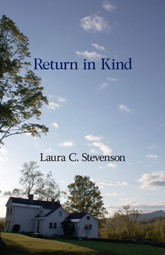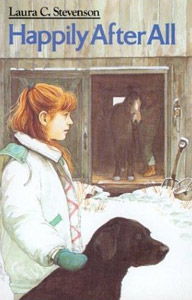A New Series: One Minute Reviews of
Books by Vermont Authors
Laura's column "One Minute Reviews" has appeared bi-weekly in Wilmington, Vermont's Deerfield Valley News since 2015. In April 2018, she found that no Vermont periodical consistently reviews all commercially published fiction and non-fiction by Vermont authors, so she started a series to fill that void. Published reviews from that series and some earlier reviews of local authors are listed with links to a scan of the printed copy. Reviews still in queue are listed without links until they appear in print.
The books reviewed in this series are available through Wilmington's Pettee Memorial Library, the Whitingham Free Public Library, and locally owned Bartleby's Books in Wilmington.
Deerfield Valley News, 11/4/2021
Books and Brutality in Czarist Russia
Michael Freed-Thall, Horodno Burning. Rootstock Publishing, 2021
Horodno Burning chronicles the fictional lives of Esther Leving and Bernard Garfinkle, from their separate childhoods in 1860s Horodno (the Yiddish name for Grodno, in present-day Belarus), through their marriage and the birth of their twins in the 1870s, to the pogrom of 1882 and the family’s flight to America in 1885. Esther (Estes, throughout the book) is an intellectual who can read in five languages by the time she is fifteen, a woman infuriated by the inferior position of women in Russian and Jewish culture, and increasingly, a writer. Bernard, the son of a vodka distiller, is deeply religious—and unable to read. As Estes puts it, “Single words aren’t the problem, but when they gather, all talking at once, he lurches forward, pauses, sound out, only to lose his way and backtrack. It exhausts him.” Patiently, she helps him improve his reading—thus offering him a place in a culture that is devoted to literature and learning.
Among other things, the book is a tribute to a loving marriage between two people who work out ways tolerate each other’s conflicting ideas: Estes, an atheist and free-thinker, tolerates Bernard’s Judaism; Bernard, sympathizing with Estes’s dislike of a religion that separates men and women in worship and systematically educates only boys, quietly worships at home. He also builds Estes a bookshop that becomes the intellectual center of Horodno. Into this center, Freed-Thall draws two women from the history of the period: the Polish writer Eliza Orzeszkowa, well-known among nineteenth-century Jews for her hatred of anti-Semitism; and the revolutionary Gesia Gelfman, who was involved in the 1881 Assassination of Czar Alexander II. Skillfully incorporated into the novel, these women inspire Estes’s writing. They also worry Bernard, and with reason, for Estes’s relationships with the two attract the attention of Russian officials, who become increasingly suspicious of Estes’s published writing and private correspondences after the accession of the rabidly anti-Semitic Alexander III.
Horodno Burning’s characters and events, together with its portrayal of a people whose love of learning nourishes their determination to survive in increasingly dangerous times, give it more the flavor of an epic than a novel. Its compassion and lack of melodrama are superb. Its triumph, however, is its detailed portrayal of life in the late-nineteenth century Pale of Settlement. The Pale covered the western part of the Russian Empire to which, between 1791 and 1917, the Czars gradually banished 94% of their Jewish subjects. Touching the Baltic Sea in the north and stretching to the Black Sea in the south, the Pale covered modern-day Lithuania, Belarus, Moldova, Ukraine, large portions of Poland, and small parts of Latvia and Russia. At the time of Horodno Burning, it contained close to 4,900,000 Jews: 40% of the Jewish population of the world. What Freed-Thall catches so magnificently is daily life in the cross-cultural cities of The Pale. Estes’s father, a shoemaker, speaks Yiddish, Polish and Russian. Bernard hires a Polish friend when he takes over his father’s distillery; his Jewish friends initially object, but eventually they become comrades. Walks through the markets, streets, and train stations—along with a cart ride through the shtetls that dot the landscape—portray warmth of spirit as well as a cold, dark and muddy landscape. This is a wonderful, compelling book. Read it.


